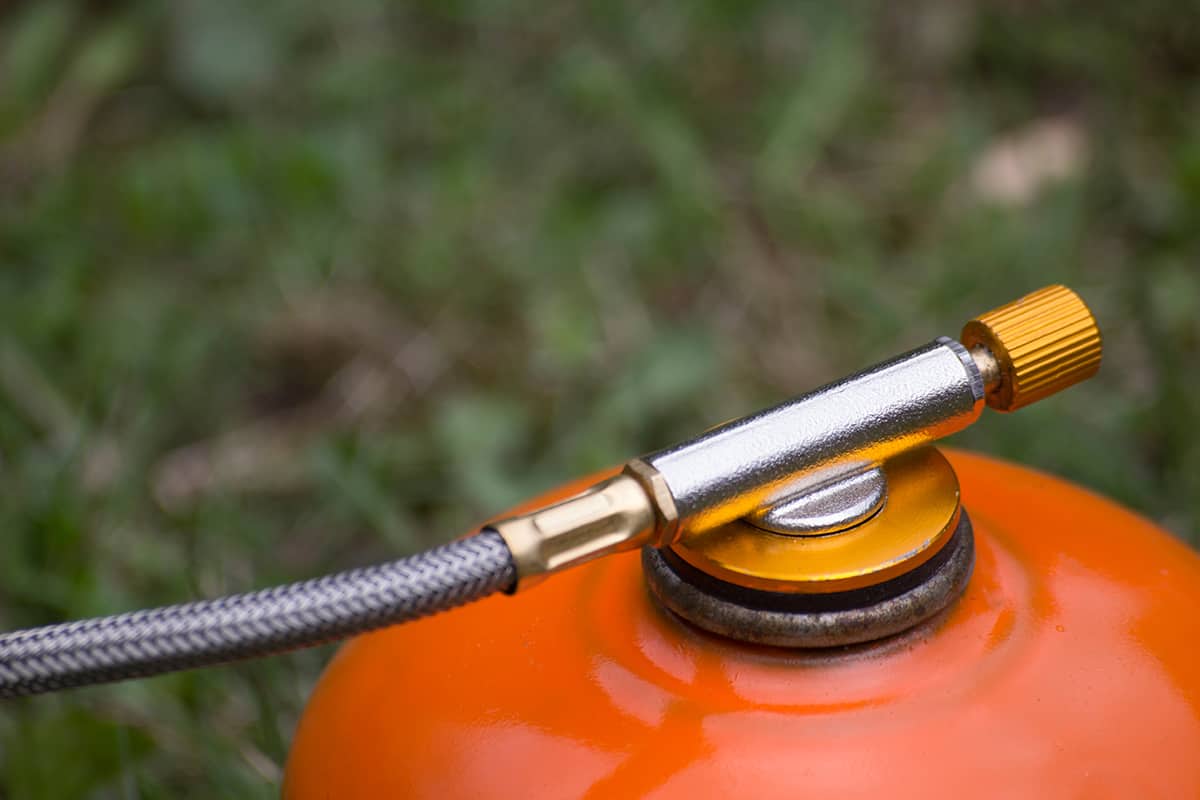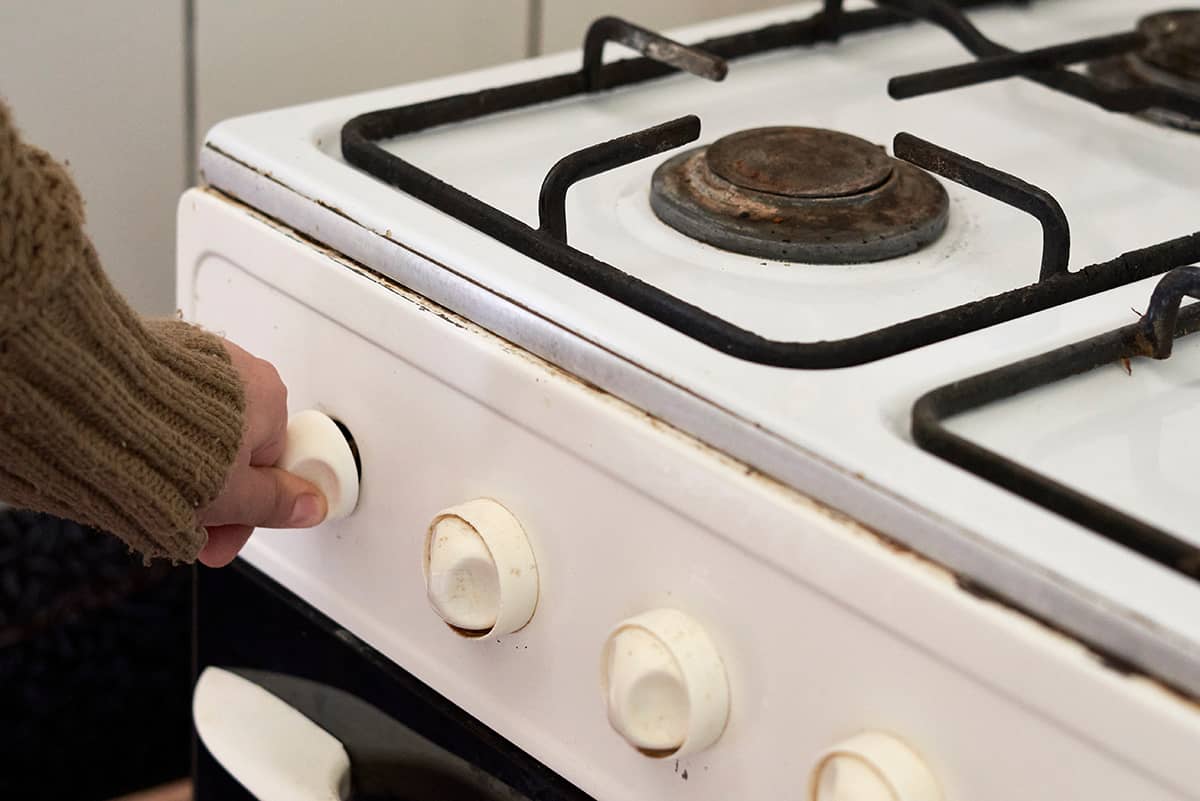Gas ovens provide more consistent baking from start to finish, ensuring your food is evenly cooked when it comes out of the oven. However, gas ovens are also more prone to technical problems, such as not staying on when you want it to. So, what can you do about it?
If you find your gas oven struggling to stay lit, you can usually resolve the issue by:
- Inspecting the gas supply line
- Fixing the pilot light
- Cleaning the burners
- Checking the electric igniter
- Fixing the temperature sensor
What to do When Gas Oven Won’t Stay Lit
One of the worst feelings in the world is having your pizza, calzone, pie, or roast ready for the oven but not having your oven ready for your food. One common oven-related problem people experience, especially with gas ovens, is that the oven doesn’t stay lit.
Unfortunately, this is a symptom that is associated with a myriad of oven problems. So, let’s take a look at the individual causes and solutions to keep your gas oven nice and hot.
1. Faulty gas line
Gas ovens require a steady flow of gas to work. Without it, the burners won’t turn on, the fire pilot will die out, and you’re pretty much left with a large paperweight for your kitchen. So, if your oven won’t turn on or stay lit, one of the first things you should inspect is the gas supply line.
Solution #1: Tighten the gas line connection

If you move your oven around a lot, or if you just moved houses or apartments, you might not have tightened the gas line connection as securely as you should have. When this happens, the gas will leak out of any tiny gaps in the connection, preventing your oven from sending a steady flow of gas to the burner.
You can tighten the connection by hand, but I advise using a wrench to tighten any weak points. The harder it is to undo the connection, the greater the chance that the gas will flow directly to the burner.
Solution #2: Listen to the gas line for a hissing sound
Turn off all the dials on your gas oven and inspect the gas supply line. If the connection is secure, you won’t hear any hissing sounds. If the connection is weak, or if there is a tear in the supply line, your oven is probably not receiving enough gas to maintain a flame.
Usually, the smell of gas in your kitchen is enough to tell whether there’s a tear or crack in the gas supply line. If this is the case, do not attempt to light your range. Call a professional contract repairman to replace the gas line for you.
2. Dead pilot light
The pilot light is a nonstop flame inside the broiling cabinet or underneath a cover inside the oven. It remains on indefinitely in order to ignite the gas whenever you turn on the oven. If the pilot light goes out, the thermocouple will engage, blocking the flow of gas through the pilot valve.
Solution #1: Reignite the pilot light

Strike a match or activate a long lighter and place the flame close to the pilot valve. It should be perpendicular to the oven’s burners. Keep closing the distance between the fire source and the pilot valve until the pilot light is lit.
Solution #2: Clean the thermocouple
The thermocouple in a gas range is a safety mechanism that shuts the flow of gas to the pilot valve whenever the pilot light goes out. If the thermocouple is dirty, it might not open to allow gas to flow through the pilot valve. Shut the oven off and use a long bamboo skewer to check the thermocouple of blockage.
Solution #3: Realign the thermocouple
If you moved houses recently, you should inspect the thermocouple to ensure that it’s where it’s supposed to be. The tip should be directly in the way of the burner’s flames. If it isn’t, gently reposition the tip until it’s in the way of the burners. Consult your oven’s paperwork to see where the thermocouple should be.
Solution #4: Replace the thermocouple
If none of the above solutions worked, you might be in the midst of a defective thermocouple. If the pilot light doesn’t stay lit, there’s a good chance that the thermocouple cannot register the heat coming from the flame and automatically instructs the oven to shut its gas valve.
In this case, your only hope is to replace the thermocouple completely. Luckily, replacement thermocouples are relatively inexpensive and easy to install. This video by Gadgetmiser on YouTube will show you exactly what you need to do (and there’s catchy music to keep you entertained!).
3. Dirty burners

Over the span of hundreds of baked meals, there’s probably a good chance that the burners may have been soiled with food remnants. If there is a solid blockage in the burner, it will limit how much gas flows into the oven, possibly dousing the flame completely.
Solution #1: Press and hold the oven’s dial for 30 seconds
Gas ranges may come with a hidden safety button behind the dials. You’ll know whether or not your gas oven has this if you need to push the dial before turning it to activate your oven. Whenever you push the dial, gas will flow out of the burner, creating a gas-filled environment for the pilot light to start.
Press and hold the oven’s dial for 30 seconds before trying to turn on the oven. Doing this will send continuously send gas through the burners, which will hopefully dislodge solid debris. If this doesn’t work, wait 10 to 15 minutes before trying again. Doing this allows the buildup of gas to dissipate and reduces the risk of huge fires in your kitchen.
Solution #2: Clean the burners
To get to the burner, you will have to pull out the broiler cabinet at the bottom of the gas oven. The burner should be a metal tube with a series of holes on two sides. When you turn the oven on, gas will flow through the holes while an igniter sparks the gas to create flames.
If any of the holes do not produce flames, shut off the oven, remove the burner, and soak it in a basin of soapy water. Take a sponge and clean the burner thoroughly before using a bamboo skewer to dislodge solid debris inside the holes. Let the burner dry completely before reinstalling it in your oven and testing it out again.
4. Dirty electric igniter
Some gas ovens come with electric igniters. These igniters produce a spark near the burner, which will catch fire and heat your oven up. If the electric igniter is faulty, it might not produce a large enough spark, if at all, to produce consistent flames.
Solution: Clean the electric igniter
The location of the igniter varies from model to model. Most of the time, it will be in the broiling cabinet at the bottom of the oven. Open the cabinet and have someone turn on the oven while you inspect the igniter for a spark. If it doesn’t produce a spark, use a bamboo skewer to carefully remove debris and grease that may be in the way.
5. Defective temperature sensor
In the top-left or top-right corner of the back wall inside your oven, you’ll find a temperature sensor. This component’s job is to ensure that the oven reaches and maintains the set temperature via the oven’s dials. If it takes longer than usual for your food to cook or for the oven to preheat, the temperature sensor may be out of whack.
Solution #1: Reposition the temperature sensor
The temperature sensor may have been knocked out of position when you last moved the oven. Simply place it back in its port and test the oven.
Solution #2: Replace the temperature sensor
If the problem persists, you will have to replace the temperature sensor. These components rarely fail, but when they do, replacement sensors can be quite costly. After receiving a replacement, check out this video by RepairClinic to see how to install it.






